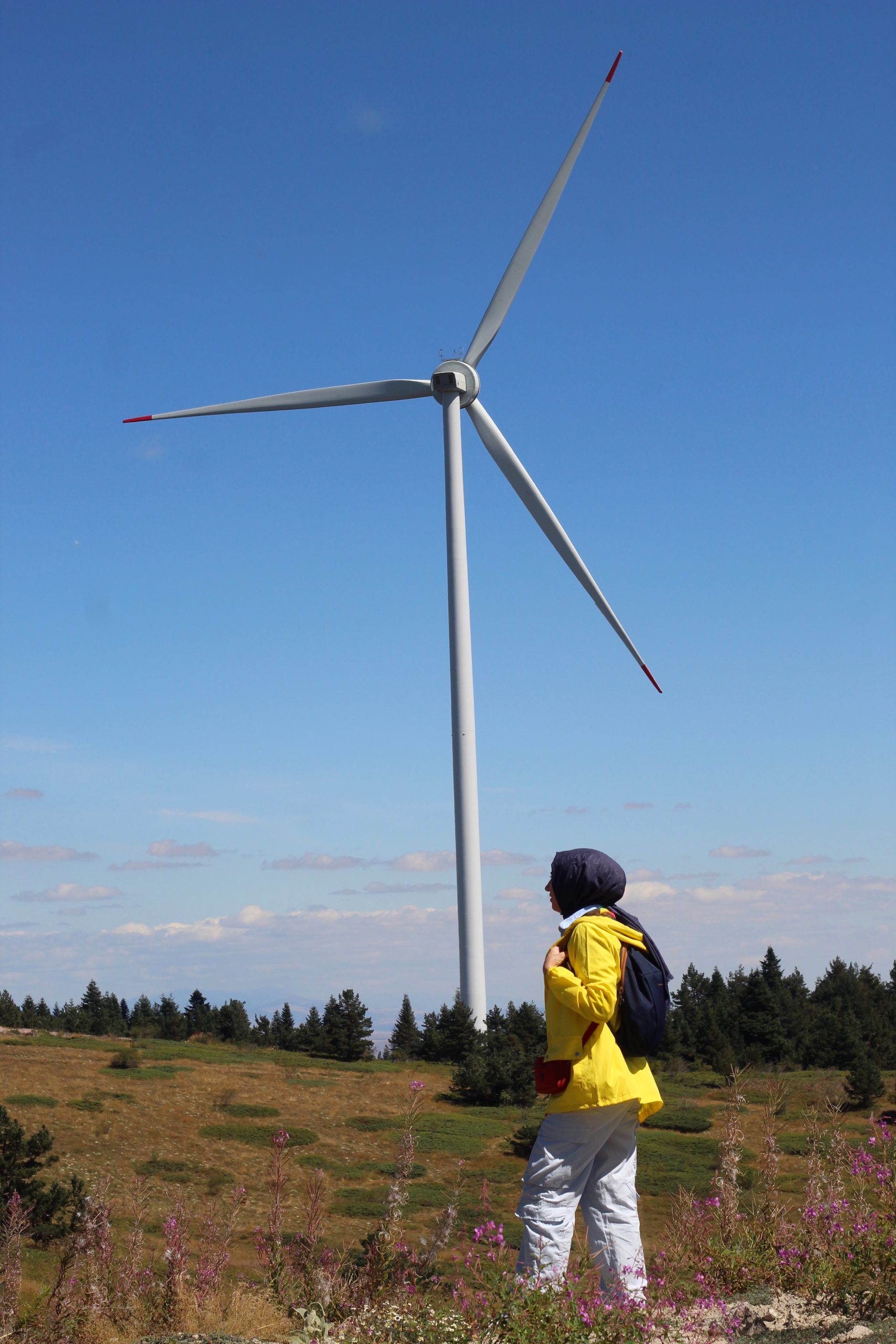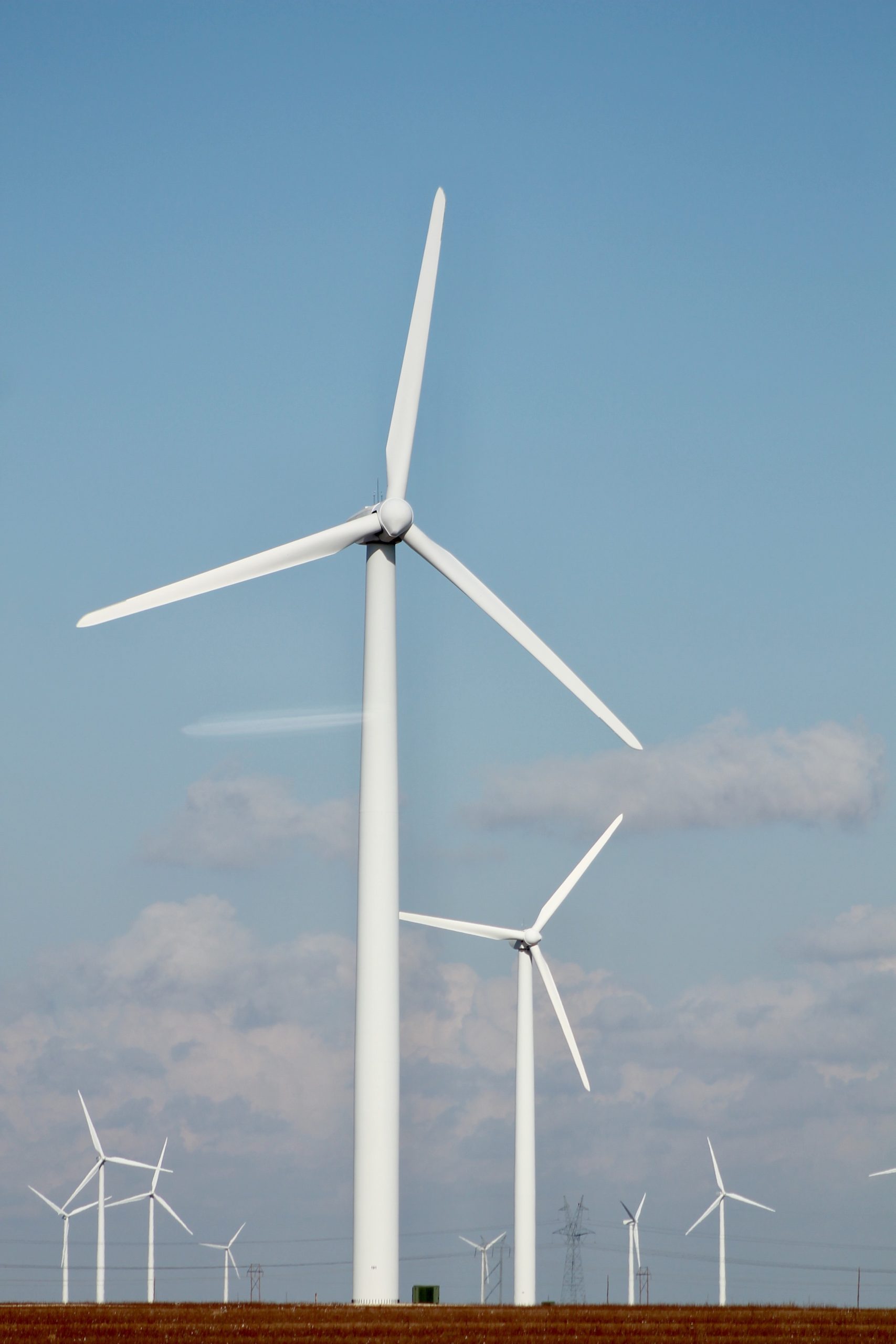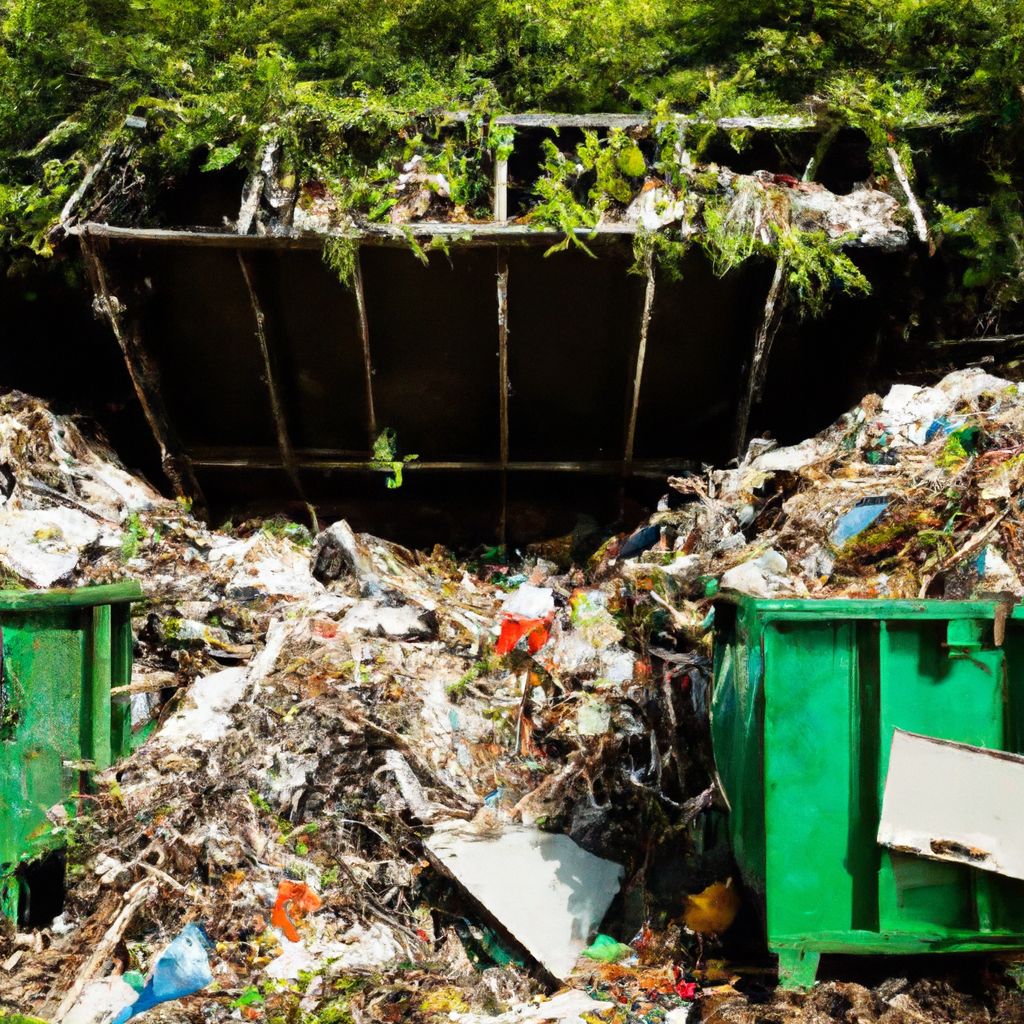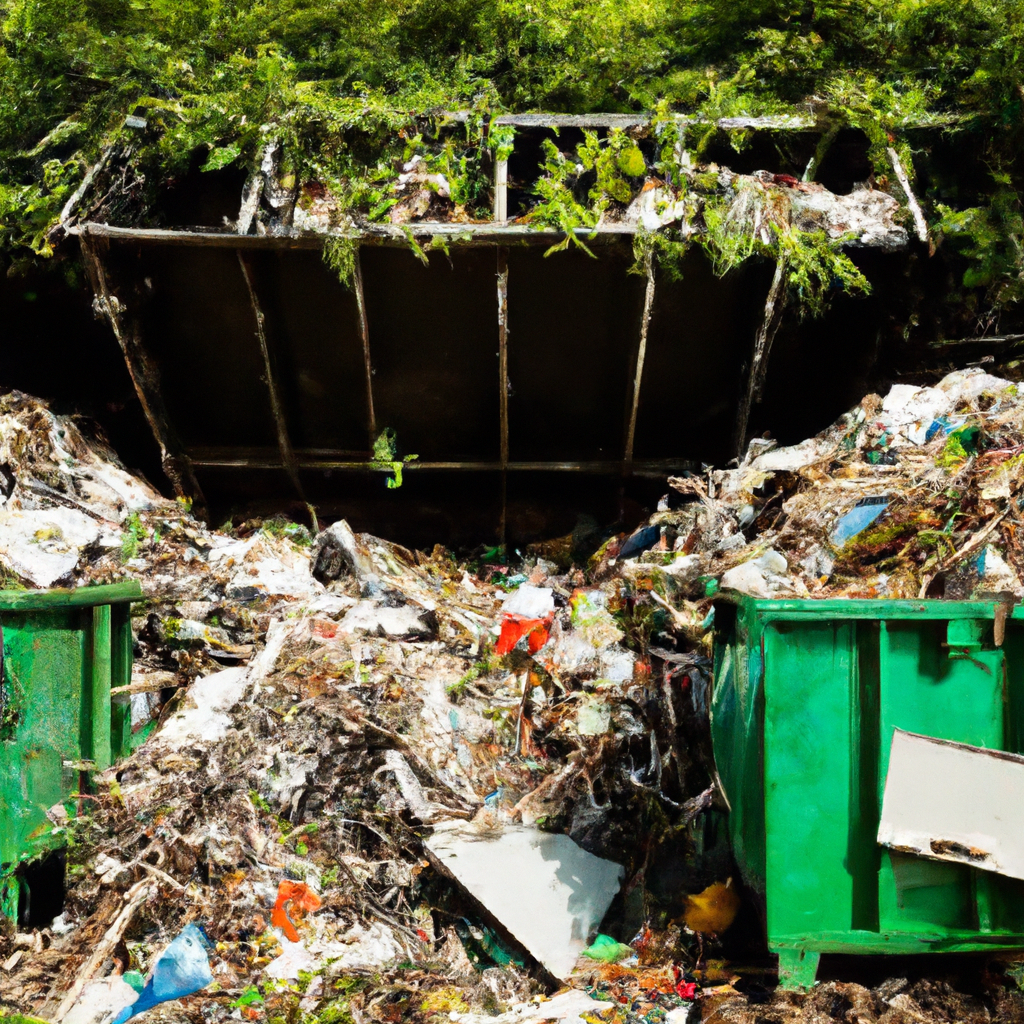In the not-so-distant future, your garbage just might hold the key to powering your home and fueling your car. Waste management practices are rapidly evolving, with a focus on converting trash into a valuable resource: energy. With the ever-growing concern for the environment and the need to find sustainable solutions, researchers and innovators are exploring innovative ways to harness the untapped potential of our waste. From advanced recycling techniques to cutting-edge conversion technologies, the future of waste management holds exciting possibilities to transform our trash into a renewable energy source.
Introduction to Waste Management
Current Challenges in Waste Management
As the global population continues to grow, so does the amount of waste produced. This increase in waste poses significant challenges to waste management systems worldwide. Some of the current challenges include limited landfill space, increasing environmental concerns, and the need for more sustainable waste management practices.
Importance of Sustainable Waste Management
Sustainable waste management plays a crucial role in preserving the environment and conserving natural resources. It involves reducing the amount of waste generated, maximizing recycling and reuse, and utilizing advanced technologies to convert trash into energy. Implementing sustainable waste management practices not only minimizes landfill usage but also reduces greenhouse gas emissions and promotes a circular economy.
Need for Converting Trash to Energy
One of the key strategies in sustainable waste management is the conversion of trash to energy. This approach not only helps in waste reduction but also provides an alternative source of renewable energy. By converting waste into energy, we can minimize the dependency on fossil fuels, reduce carbon emissions, and contribute to a greener, more sustainable future.
Waste-to-Energy Technologies
Incineration
Incineration is a widely used waste-to-energy technology that involves the combustion of waste materials at high temperatures. This process converts the organic matter in waste into heat and electricity. Incineration plants are equipped with advanced air pollution control systems to minimize emissions and ensure compliance with environmental regulations.
Anaerobic Digestion
Anaerobic digestion is a biological process that breaks down organic waste materials in the absence of oxygen. This process produces biogas, which can be used as a renewable energy source or converted into electricity and heat. Anaerobic digestion not only helps in waste management but also reduces methane emissions, a potent greenhouse gas.
Gasification
Gasification is another waste-to-energy technology that converts carbon-based waste materials into synthetic gases or syngas. This syngas can be further utilized to produce electricity, heat, or even biofuels. Gasification offers higher energy efficiency compared to incineration and reduces carbon dioxide emissions.
Pyrolysis
Pyrolysis is a thermal degradation process that converts organic materials into bio-oil, syngas, and char. The bio-oil and syngas can be used as sources of renewable energy, while the char can be utilized as a soil amendment. Pyrolysis offers the advantage of producing valuable by-products and has the potential for scaling up in the future.

Incineration
Overview of Incineration Process
Incineration involves the controlled combustion of waste materials in specialized incinerators. The waste is burned at high temperatures, typically ranging from 800 to 1,200 degrees Celsius. The heat generated is then used to produce steam, which drives a turbine generator to produce electricity. The residual ash after incineration can be safely disposed of or utilized in construction materials.
Benefits of Incineration
Incineration offers several benefits in waste management. It reduces the volume of waste, minimizing the need for landfill space. The energy generated from incineration can be used to power homes and businesses, reducing the reliance on non-renewable energy sources. Additionally, incineration can generate revenue from the sale of electricity or heat produced.
Concerns and Challenges
Despite its advantages, incineration also raises concerns and challenges. One of the main concerns is air emissions, including the release of potentially harmful pollutants such as dioxins and heavy metals. However, modern incineration plants are equipped with advanced air pollution control systems to minimize emissions and meet stringent environmental standards. Another challenge is public perception and opposition to incineration due to concerns about potential health risks and the preference for more environmentally friendly waste management methods.
Anaerobic Digestion
How Does Anaerobic Digestion Work?
Anaerobic digestion is a natural process that occurs in the absence of oxygen. Organic waste such as food scraps, agricultural waste, and sewage sludge is placed in an anaerobic digester, where bacteria break down the waste and produce biogas. The biogas, primarily consisting of methane and carbon dioxide, can be collected and used as a renewable energy source. The remaining digested material, known as digestate, can be used as a nutrient-rich fertilizer.
Advantages of Anaerobic Digestion
Anaerobic digestion offers several advantages in waste management. It reduces the organic fraction of waste, which is typically the largest component and a significant contributor to greenhouse gas emissions. By utilizing biogas as a renewable energy source, anaerobic digestion reduces reliance on fossil fuels and helps combat climate change. Furthermore, the digestate produced can enhance soil fertility and reduce the need for synthetic fertilizers.
Limitations and Potential Issues
Despite its benefits, anaerobic digestion also has limitations and potential issues. It requires a constant supply of organic waste to maintain optimal operating conditions, which can be a challenge in some regions. Maintenance and monitoring of anaerobic digesters are essential to ensure optimal biogas production and prevent potential issues such as process upsets or the accumulation of toxic substances. Additionally, the quality of the feedstock and the composition of the waste can significantly impact the efficiency and effectiveness of anaerobic digestion.

Gasification
Understanding Gasification Process
Gasification is a thermal conversion process that converts carbon-based waste materials into a synthetic gas known as syngas. The process involves heating the waste material at high temperatures in the presence of a controlled amount of oxygen or steam. The resulting syngas can be combusted to generate electricity, heat, or further processed into liquid fuels or chemicals. The solid residue, known as slag, can be used in construction materials or as a raw material in other industries.
Advancements in Gasification Technology
Advancements in gasification technology have made it a promising option for waste-to-energy conversion. Integrated gasification combined cycle (IGCC) systems, which combine gasification with steam turbines, offer higher energy efficiency and lower emissions compared to conventional incineration. Additionally, advancements in gas cleaning and gasification reactor designs have improved operational reliability and reduced maintenance requirements.
Environmental and Economic Benefits
Gasification offers several environmental and economic benefits. By converting waste into syngas, it reduces reliance on fossil fuels and decreases greenhouse gas emissions. The syngas produced can be utilized in various applications, including electricity generation, heat production, or the production of transportation fuels. Furthermore, the by-products generated during gasification, such as slag and ash, can be utilized in construction materials, minimizing the need for raw materials extraction and reducing waste generation.
Pyrolysis
Pyrolysis as a Waste-to-Energy Conversion Method
Pyrolysis is a thermal decomposition process that converts organic waste materials into bio-oil, syngas, and char. The process occurs in the absence of oxygen, preventing complete combustion. The bio-oil and syngas can be used as sources of renewable energy, while the char can be utilized as a soil amendment. Pyrolysis offers the advantage of producing valuable by-products and has the potential for scaling up in the future.
Applications and Uses of Pyrolysis
Pyrolysis has a wide range of applications and uses. The bio-oil produced can be used as a substitute for fossil fuels in various applications, including heat production and electricity generation. The syngas generated can be utilized in diverse industries, such as chemical production or as a feedstock for the synthesis of renewable fuels. Additionally, the char produced during the process can improve soil fertility and enhance carbon sequestration in agricultural fields.
Challenges and Future Potential
While pyrolysis shows promise as a waste-to-energy conversion method, it also faces challenges and limitations. The quality and composition of the feedstock can significantly impact the efficiency and quality of the end products. Additionally, the current cost of pyrolysis technology and the lack of infrastructure pose obstacles to large-scale implementation. However, ongoing research and development efforts aim to address these challenges and unlock the full potential of pyrolysis in waste management.

Waste Sorting and Pre-treatment
Importance of Proper Waste Sorting
Proper waste sorting is a crucial step in effective waste management. It involves separating different types of waste at the source, such as homes or businesses, to facilitate recycling and the implementation of waste-to-energy technologies. Proper waste sorting reduces contamination, improves the quality of recyclable materials, and ensures that waste destined for energy conversion processes meets the necessary requirements.
Pre-treatment Methods for Effective Waste Conversion
Pre-treatment methods are employed to prepare waste for conversion into energy. These methods include sorting, shredding, and size reduction to enhance the efficiency of subsequent conversion processes. Pre-treatment can also involve the removal of non-combustible materials, such as metals or glass, to improve the quality and composition of the waste before incineration or other conversion methods.
Challenges and Limitations
Technical Limitations
Waste-to-energy technologies face technical limitations that impact their scalability and effectiveness. Factors such as the composition and variability of waste, process efficiency, and operational reliability can pose challenges in achieving optimal energy conversion and waste reduction. Ongoing research and development efforts focus on addressing these technical limitations and improving the performance of waste-to-energy systems.
Environmental Concerns
While waste-to-energy technologies offer environmental benefits, they also raise concerns regarding emissions and air pollution. Incineration, gasification, and other conversion processes can release potentially harmful pollutants, such as dioxins, heavy metals, or greenhouse gases. However, stringent environmental regulations and the implementation of advanced air pollution control systems help mitigate these concerns and ensure the safe and sustainable operation of waste-to-energy facilities.
Economic Viability
The economic viability of waste-to-energy technologies is influenced by various factors, including the availability and cost of feedstock, the efficiency of the conversion process, and the revenue generated from the sale of electricity or by-products. Economic incentives, such as government policies and subsidies, are crucial in promoting the development and deployment of waste-to-energy technologies. Continued advancements in technology and economies of scale can also contribute to improving the economic feasibility of these systems.

Future Developments and Innovations
Research and Development Initiatives
Various research and development initiatives are focused on advancing waste-to-energy technologies. These efforts aim to improve process efficiency, reduce emissions, develop novel conversion methods, and optimize the integration of waste management systems with renewable energy sources. By fostering innovation and collaboration, these initiatives contribute to the continuous improvement and future development of waste-to-energy solutions.
Integration with Renewable Energy Sources
The integration of waste-to-energy systems with renewable energy sources offers significant potential for a sustainable and efficient energy future. For example, waste-to-energy facilities can utilize excess heat generated during the conversion process for district heating or combine renewable energy technologies such as solar or wind with waste conversion to maximize overall energy production. This integration enhances energy efficiency, reduces carbon emissions, and contributes to the achievement of renewable energy targets.
Public Awareness and Policy Support
Public awareness and policy support play crucial roles in promoting sustainable waste management and waste-to-energy solutions. Education and outreach initiatives can raise awareness about the importance of waste reduction, recycling, and responsible waste management practices. Governments can provide policy support, including incentives and regulations, to encourage the adoption and development of waste-to-energy technologies. By fostering public awareness and policy support, we can create an environment conducive to the advancement and widespread implementation of sustainable waste management solutions.
Conclusion
Converting trash to energy through waste-to-energy technologies offers significant benefits in waste management, energy production, and environmental sustainability. Incineration, anaerobic digestion, gasification, and pyrolysis are among the key technologies utilized for this purpose. While each technology has its advantages and limitations, ongoing research, technological advancements, and policy support are driving the future development and implementation of more efficient and sustainable waste-to-energy solutions. By embracing these innovative approaches, we can move towards a greener and more sustainable future, where waste becomes a valuable resource rather than a burden.













